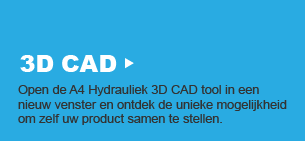A Hydraulic cylinder (also called a linear hydraulic motor) is a mechanical actuator that is used to give a unidirectional force through a unidirectional stroke. It has many applications, notably in engineering vehicles.
Hydraulic cylinders get their power from pressurized hydraulic fluid, which is typically oil. The hydraulic cylinder consists of a cylinder barrel, in which a piston connected to a piston rod moves back and forth. The barrel is closed on each end by the cylinder bottom (also called the cap end) and by the cylinder head where the piston rod comes out of the cylinder. The piston has sliding rings and seals. The piston divides the inside of the cylinder in two chambers, the bottom chamber (cap end) and the piston rod side chamber (rod end). The hydraulic pressure acts on the piston to do linear work and motion.
Flanges, trunnions, and/or clevisses are mounted to the cylinder body. The piston rod also has mounting attachments to connect the cylinder to the object or machine component that it is pushing.
A hydraulic cylinder is the actuator or "motor" side of this system. The "generator" side of the hydraulic system is the hydraulic pump which brings in a fixed or regulated flow of oil to the bottom side of the hydraulic cylinder, to move the piston rod upwards. The piston pushes the oil in the other chamber back to the reservoir. If we assume that the oil pressure in the piston rod chamber is approximately zero, the force F on the piston rod equals the pressure P in the cylinder times the piston area A:
The piston moves instead downwards if oil is pumped into the piston rod side chamber and the oil from the piston area flows back to the reservoir without pressure. The pressure in the piston rod area chamber is (Pull Force) / (piston area - piston rod area).











